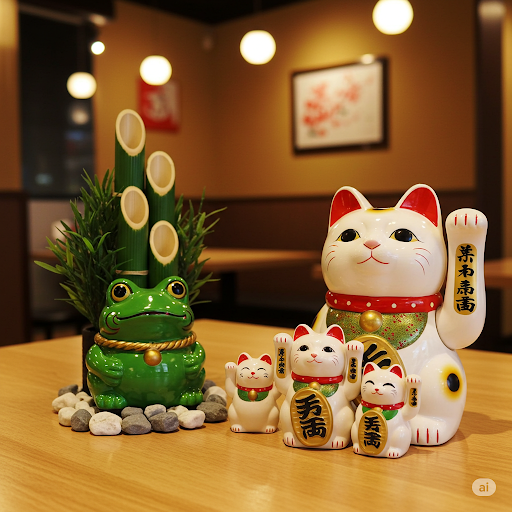
Indoor vs. Outdoor: Where Do Cats Truly Prefer to Roam?
Share
Indoor vs. Outdoor: Where Do Cats Truly Prefer to Roam?
It's a debate as old as the purr itself among cat owners: should my feline friend be an indoor-only dwelling champion, or a free-roaming adventurer? Both sides have passionate advocates, and the truth is, there's no single "right" answer. A cat's preference can be as individual as their personality, influenced by their environment, upbringing, and access to enrichment. Let's explore the allure and challenges of both lifestyles to understand where cats truly find their bliss.
The Call of the Wild: Why Cats Love the Outdoors
From a cat's perspective, the outdoors is a sensory wonderland that appeals deeply to their innate instincts.
- Instinctual Fulfillment: Cats are natural hunters, explorers, and territorial beings. Outside, they have endless opportunities to stalk (even if it's just a leaf), climb trees, mark their territory, and patrol their domain. This satisfies deep-seated evolutionary drives.
- Sensory Richness: The outdoors provides an ever-changing tapestry of sights, sounds, and smells. Rustling leaves, chirping birds, buzzing insects, and a myriad of new scents offer constant mental stimulation that a static indoor environment can't replicate.
- Exercise and Stimulation: The natural environment encourages physical activity. Running, jumping, climbing, and pouncing keep cats physically fit and mentally engaged, reducing boredom and potential behavioral issues that can arise from a sedentary lifestyle.
The Hidden Dangers: Why the Outdoors Worries Owners
While outdoor access offers enrichment, it comes with significant risks that shorten a cat's lifespan dramatically. Studies show that indoor cats typically live 10-15 years or more, while outdoor cats often average only 2-5 years.
- Vehicles: Car accidents are the leading cause of death for outdoor cats. In urban and suburban areas like Miami, traffic poses a constant, grave threat.
- Predators: Even in seemingly safe neighborhoods, outdoor cats face dangers from coyotes, larger aggressive dogs, and even other cats.
- Diseases and Parasites: Exposure to other animals means a higher risk of contagious diseases like Feline Immunodeficiency Virus (FIV), Feline Leukemia Virus (FeLV), rabies, and numerous internal (worms) and external (fleas, ticks) parasites.
- Toxins: Outdoor cats are exposed to pesticides, antifreeze, rat poisons, and other harmful chemicals found in gardens, garages, and discarded waste.
- Getting Lost or Stolen: Disorientation, wandering too far, being trapped, or even intentional harm from humans are real risks.
- Weather Extremes: Exposure to harsh sun, heavy rain, or cold snaps can lead to heatstroke, hypothermia, or frostbite.
- Impact on Wildlife: Even well-fed domestic cats retain their hunting instincts. They are highly effective predators of local bird populations and small mammals, contributing to significant declines in native wildlife, especially vulnerable species.
The Indoor Sanctuary: Why Owners Prefer Confinement
For many owners, keeping their cats indoors is a commitment to their safety and longevity.
- Safety and Longevity: As mentioned, indoor cats generally live significantly longer, healthier lives, protected from the myriad of outdoor dangers.
- Disease Prevention: Controlled indoor environments vastly reduce exposure to contagious illnesses and parasites, meaning fewer costly vet visits for preventable conditions.
- Controlled Environment: Owners can easily monitor their cat's health, diet, litter box habits, and overall well-being.
- Stronger Human-Cat Bond: Without the distractions of the outdoors, indoor cats often form deeper, more direct bonds with their human companions through increased interaction and play.
The Indoor Challenge: Addressing Boredom and Insticts
The main drawback of an indoor-only life is the potential for boredom and lack of adequate stimulation if not managed properly. This can lead to behavioral issues such as:
- Excessive grooming
- Destructive scratching
- Litter box avoidance
- Aggression
- Obesity due to insufficient exercise
Finding the Purr-fect Balance: A Compromise
The good news is that you don't always have to choose one extreme over the other. Modern cat care increasingly focuses on providing safe ways for cats to experience the best of both worlds:
- Catios (Cat Patios/Enclosures): These secure, enclosed outdoor spaces allow cats to safely enjoy fresh air, sunshine, bird-watching, and climbing without exposure to hazards or the risk of impacting wildlife. They can range from small window boxes to elaborate backyard structures.
- Leash Training: For some cats, leash training can open up a world of supervised outdoor adventures. This requires patience and the right harness, but it offers a controlled way for cats to explore.
-
Indoor Enrichment: Regardless of outdoor access, a stimulating indoor environment is crucial. This includes:
- Vertical Space: Cat trees, wall-mounted shelves, and tall scratching posts.
- Puzzle Feeders: To engage their hunting instincts and slow down eating.
- Interactive Toys: Wands, lasers (used carefully), and toys that mimic prey.
- Window Perches: Giving them a safe view of the outside world.
- Regular Play Sessions: Dedicated time for interactive play with their human.
- Cat Grass: Safe greens to nibble on.
- Microchipping and ID Tags: Essential for any cat, especially if they have any access to the outdoors, in case they ever get out.
Ultimately, the goal is to provide your cat with a life that is safe, healthy, stimulating, and fulfilling. Whether that means a pampered indoor existence, supervised outdoor adventures, or a custom-built catio, the "best" lifestyle is the one that prioritizes your individual cat's well-being and allows them to thrive.
